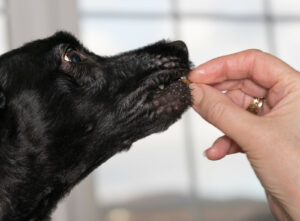Barks Blog
Scheduling Your Rewards

So…there we are teaching our dogs lots of new things and he’s responding beautifully – treat, treat, treat (yummy!) At what point though, do we stop dishing out all these lovely delicacies? This is a question I’m asked multiple times per week. It’s true that if we continued to treat our dogs at the same rate, at some point we’d end up with enormously fat canines – not great! So, we have to think about something called schedules of reinforcement
Determining what scheduled to use
When our dogs are learning a new behaviour, take for example we’re teaching them to sit, that is acquired behaviour and learning of that behaviour is placed upon an acquisition schedule – Continuous reinforcement is required in order to ensure learning (training ‘sit’ successfully). On the other hand, consider you’ve had great success with teaching your dog ‘sit’ and he’s got it, now this behaviour is well learned and so it shifts to a maintenance schedule which includes a less intensive schedule of reinforcement. If however we completely stopped reinforcing our dog, he would stop sitting i.e. the behaviour would become extinct.
Looking at Types of Schedules
Fixed Ratio
This is probably the most frequently employed method of offering our dogs reinforcement because it’s simple and can be administered without thought. Here reinforcement is simply offered after a fixed number of responses given by the dog – usually just 1 (e.g. sit – treat). This type of reinforcement is a powerful means of increasing the learning of new behaviour. Generally though dogs will respond well with this form of scheduling until they become completely satiated by the reinforcement!
Variable Ratio
You might employ this form of scheduling if you were gravitating from reinforcing a newly learned to a well established behaviour. Variable ratio schedules involve reinforcing the dog after a variable number of responses (e.g. treat the dog for sitting the 1st, 3rd, 6th and 10th time). Variable ratio schedules also have the advantage that they are more resistant to extinction than fixed ratio schedules and they generate keener responses – the dog doesn’t know when he will obtain the reward, so he tries harder to obtain it!
Fixed Interval
Here, you might wait a specific amount of time before rewarding your dog. This is a schedule to use carefully because used unwisely it can build frustration. It is important to begin with a short fixed interval. So I would tend to use fixed interval scheduling when promoting calm or when tackling over-arousal or with duration training. Examples include conditioning calm with mat training and rewarding the dog for a fixed interval of time lying calmly in this location or down-stay for 10 seconds for instance. Rewards would not be on offer outside your fixed interval bracket.
Variable Interval
With variable interval scheduling, you reward the first response after a variable interval of time. This form of scheduling is of practical use with focal/duration training such as ‘watch’ where you gradually reward the dog for looking at you over time which incrementally increases – As with fixed interval schedules it is important to begin with a short interval – responding rates are fast when you begin with a short duration and work up.
I think many owners fall into the trap of thinking that they must reward their dog on a continuous schedule of reinforcement, every single time their dog responds (fixed ratio, FR1). It is up to us as trainers and behaviourists to educate and make owners aware that this is not the case and that in fact, learning and responding will in fact be strengthened if we alter reinforcement rate.

